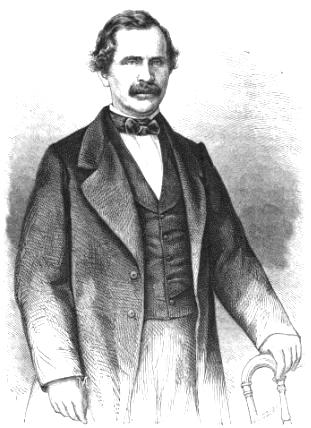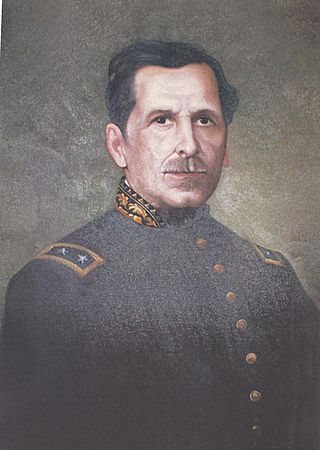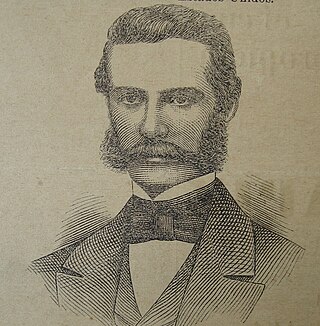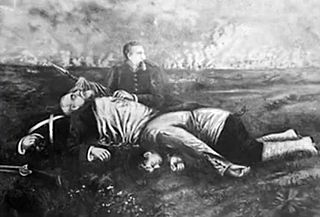
The Federal Republic of Central America, initially known as the United Provinces of Central America, was a sovereign state in Central America which existed from 1823 to 1839/1841. The Federal Republic of Central America was composed of five states: Costa Rica, El Salvador, Guatemala, Honduras, and Nicaragua, as well as a Federal District from 1835 to 1839. Guatemala City was the federal republic's capital city until 1834 when the seat of the federal government was relocated to San Salvador. The Federal Republic of Central America was bordered to the north by Mexico, to the south by Gran Colombia, and on its eastern coastline by the Mosquito Coast and British Honduras.

José Trinidad Cabañas Fiallos was a liberal Honduran military general and politician who served as President of Honduras on two separate occasions: From 1 March to 6 July 1852. And 31 December 1853 to 6 June 1855. His role in Honduran history began during the First Central American Civil War. He became a Central America hero, when he attempted to reunite Central America, during Francisco Morazán's tenure and after the unionist's death.

Francisco Malespín Herrera was a Salvadoran military officer and politician, elected as the president of El Salvador in 1844. He served from 7 February 1844 to 15 February 1845, when he was deposed by his vice president Joaquín Eufrasio Guzmán after invading and overthrowing the liberal government in Nicaraguan. He also led El Salvador to a short unsuccessful war against Guatemala. After being deposed, Malespin returned to El Salvador with forces from Honduras, but he was captured and assassinated. Some of Malespin's closest allies were Francisco Ferrera in Honduras as well as Juan Lindo, both conservatives. He was supported by Honduras after his downfall.

Joaquín Eufrasio Guzmán was a Central American politician and military general who served as acting President of El Salvador on three occasions: from 25 October 1844 to 16 February 1845, from 25 April 1845 to 1 February 1846, and from 19 January 1859 to 15 February 1859, after conducting a coup against General Francisco Malespín after the Guerra de Malespín, an invasion into Nicaragua which he solely started to loot the Nicaraguan metropolis of León.

Francisco Dueñas Díaz was a Salvadoran politician and member of the Conservative Party who served as President of El Salvador on four different occasions between 1851 and 1871. J. Lloyd Mecham described El Salvador during Dueñas' presidency as "experienced a far-reaching Conservative reaction".

José Gerardo Barrios Espinoza was a Salvadoran military officer and politician who served as president of El Salvador on three occasions between June 1858 and his overthrow in October 1863.

Santiago González Portillo was a Salvadoran military officer and general who served as the President of El Salvador from 15 April 1871 to 1 February 1876.

Carlos Basilio Ezeta y León was President of El Salvador from 22 June 1890 to 9 June 1894, when he was overthrown in the Revolution of the 44. He was a military ruler. He died on 21 March 1903, aged 50.

Fernando Figueroa was the President of El Salvador from 14 May to 18 June 1885 and again from 1 March 1907 to 1 March 1911. He also served twice as Minister of National Defense and Governor of San Vicente.

Doctor Manuel Enrique Araujo was a Salvadoran politician and physician who served as president of El Salvador from 1 March 1911 until his death on 9 February 1913 to his injuries sustained in an assassination attempt five days prior. Araujo is the only Salvadoran president to have been assassinated while in office.

Diego Vigil y Cocaña was a Central American politician. He was the last president of the Federal Republic of Central America (1839–40), during its disintegration. He was also chief of state of the federal states of Honduras (1829) and El Salvador.

José Matías Delgado y de León was a Salvadoran priest and doctor known as El Padre de la Patria Salvadoreña.

Manuel Aguilar Chacón was head of state of Costa Rica from April 1837 to March 1838.

The Battle of Chalchuapa was a battle between the military forces of El Salvador and Guatemala from 1–2 April 1885. Guatemalan President Justo Rufino Barrios was killed during the battle.

Barrios' War of Reunification, also known as Barrios' great attempt, was a war initiated by Guatemalan President Justo Rufino Barrios in 1885 with the goal of reunifying Central America. Of the five Central American countries, only Honduras supported Barrios' reunification effort; Costa Rica, El Salvador, and Nicaragua opposed it, as did Mexico.
The War of 1863 was a conflict fought between El Salvador and Guatemala from 13 February 1863 to 26 October 1863.

José Dolores Larreynaga Ayala was a Salvadoran politician who served as President of the Legislative Assembly of El Salvador from 1872 to 1873 and again in 1888.

Prudencio Alfaro Menéndez was a Salvadoran politician who served as Vice President of El Salvador from 1895 until 1898. He later led a joint Honduran-Nicaraguan invasion of El Salvador in 1907.

From January 1822 to July 1823, the Captaincy General of Guatemala, a former Spanish colony, was controlled by the First Mexican Empire, and briefly, the Supreme Executive Power—the provisional government that succeeded Mexican imperial rule. The captaincy general consisted of the provinces of Chiapas, Costa Rica, El Salvador, Guatemala, Honduras, and Nicaragua—the six southernmost provinces of the Mexican Empire. The incorporation of Central America brought Mexico to the height of its territorial extent.

Malespín's War was a Salvadoran and Honduran invasion of Nicaragua caused by the election of liberal democrat Manuel Pérez at the time of Central American turmoil dictated by Rafael Carrera's conservative dictatorship in Guatemala.



















